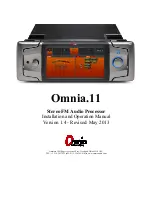
UTP Cable Lengths to Stations
Page 2-5
WARNING:
Because Near-End Crosstalk (NEXT) contributes the
majority of its detrimental effects near the end of a lobe cable, the quality
of jumper cables and patch cables is most critical. Seek the highest practical
grade. The quality of connectors and terminators is also critical.
WARNING:
Telephone Battery and Ringing voltages used in UTP
telephone circuits could present a shock hazard and can damage Token
Ring equipment if connected to Token Ring cabling. DO NOT connect
UTP cabling to any non-Token Ring network conductors
(telephone,
etc.) or ground. If in doubt, test wiring before using.
2.2.2 UTP Cable Lengths to Stations
The physical length of the cable connecting a station to a TCU port
on the concentrator is referred to as the lobe length. The maximum
lobe length attainable with the concentrator, under ideal
conditions, is shown in Table 2-3. Cable routing, connector
attenuation, noise, and crosstalk can adversely affect the maximum
lobe length.
Some UTP category 3 cables fail to meet the performance
minimums required to support a Token Ring network. Whereas
category 3 allows for near end crosstalk (NEXT) loss as low as 23 dB
per 100 m at 16 Mb/s, Token Ring performance requirements
demand a NEXT loss of at least 30.5 dB. To safeguard against worst
case conditions (running at 16 Mb/s and using category 3 cable
with the category’s lowest qualifying NEXT loss--23 dB), the
Table 2-3. UTP Maximum Lobe Lengths.
UTP
Category
Maximum Lengths
@ 4 Mb/s
@ 16 Mb/s
meters
(feet)
meters
(feet)
3
200
(656)
100*
(328)*
4
225
(738)
110
(360)
5
250
(820)
120
(393)
*for cable with NEXT loss
≥
30.5 dB per 100m
















































